Formula diet alters small intestine morphology, microbial abundance and reduces VE-cadherin and IL-10 expression in neonatal porcine model
- PMID: 27005303
- PMCID: PMC4804644
- DOI: 10.1186/s12876-016-0456-x
Formula diet alters small intestine morphology, microbial abundance and reduces VE-cadherin and IL-10 expression in neonatal porcine model
Erratum in
-
Erratum to: Formula diet alters small intestine morphology, microbial abundance and reduces VE-cadherin and IL-10 expression in neonatal porcine model.BMC Gastroenterol. 2016 May 26;16(1):55. doi: 10.1186/s12876-016-0469-5. BMC Gastroenterol. 2016. PMID: 27229864 Free PMC article. No abstract available.
Abstract
Background: Breastfeeding is associated with a variety of positive health outcomes in children and is recommended exclusively for the first 6 months of life; however, 50-70 % of infants in the US are formula-fed. To test the hypothesis that immune system development and function in neonates and infants are significantly influenced by diet, 2-day old piglets were fed soy or milk formula (n = 6/group/gender) until day 21 and compared to a sow-fed group (n = 6/gender).
Methods: Histomorphometric analyses of ileum, jejunum and Peyer's patches were carried out, to determine the inflammation status, mRNA and protein expression of pro-inflammatory, anti-inflammatory and growth-related chemokines and cytokines.
Results: In formula-fed animals, increases in ileum and jejunum villus height and crypt depth were observed in comparison to sow-fed animals (jejunum, p < 0.01 villus height, p < 0.04 crypt depth; ileum p < 0.001 villus height, p < 0.002 crypt depth). In formula-fed the lymphoid follicle size (p < 0.01) and germinal centers (p < 0.01) with in the Peyer's patch were significantly decreased in comparison to sow-fed, indicating less immune education. In ileum, formula diet induced significant up-regulation of AMCFII, IL-8, IL-15, VEGFA, LIF, FASL, CXCL11, CCL4, CCL25 and down-regulation of IL-6, IL-9, IL-10, IL-27, IFNA4, CSF3, LOC100152038, and LOC100736831 at the transcript level. We have confirmed some of the mRNA data by measuring protein, and significant down-regulation of anti-inflammatory molecule IL-10 in comparison to sow-fed piglets was observed. To further determine the membrane protein expression in the ileum, VE-cadherin, occludin, and claudin-3, Western blot analyses were conducted. Sow fed piglets showed significantly more VE-Cadherin, which associated with levels of calcium, and putrescine measured. It is possible that differences in GI tract and immune development are related to shifts in the microbiome; notably, there were 5-fold higher amounts of Lactobacillaceae spp and 3 fold higher Clostridia spp in the sow fed group in comparison to milk formula-fed piglets, whereas in milk formula-fed pigs Enterobacteriaceae spp was 5-fold higher.
Conclusion: In conclusion, formula diet alters GI morphology, microbial abundance, intestinal barrier protein VE-cadherin and anti-inflammatory molecule IL-10 expression. Further characterization of formula effects could lead to modification of infant formula to improve immune function, reduce inflammation and prevent conditions such as allergies and infections.
Keywords: GALT; Ileum; Jejunum; Nutrition; Peyer’s patches.
Figures
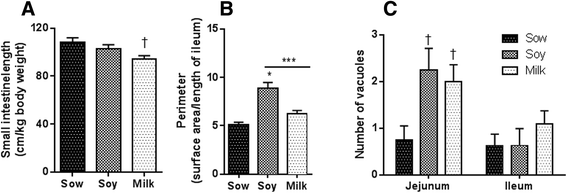
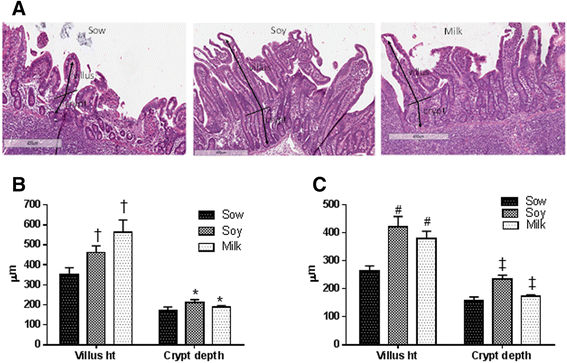
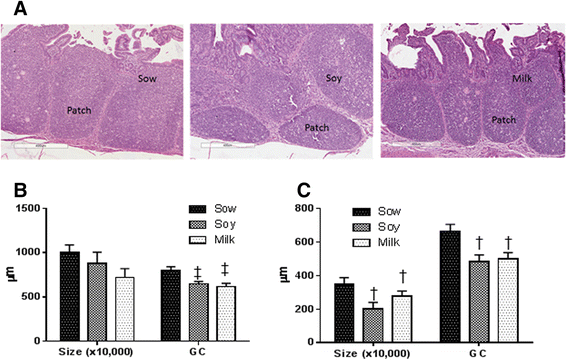
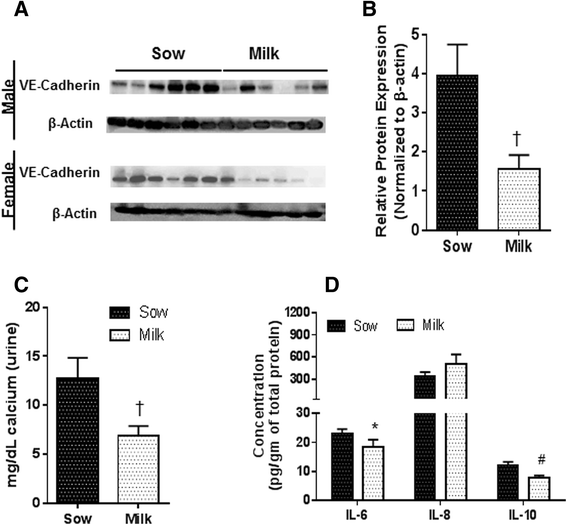
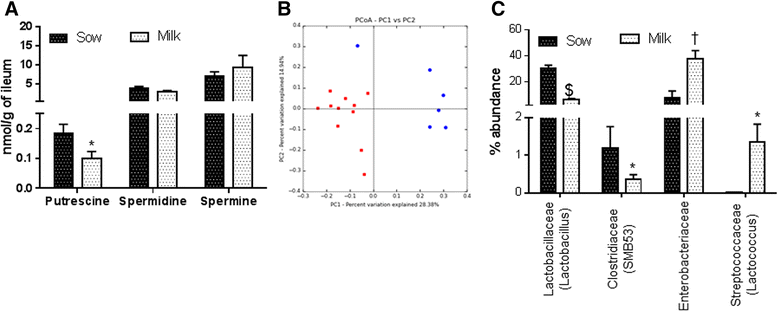
References
Publication types
MeSH terms
Substances
LinkOut - more resources
Full Text Sources
Other Literature Sources
Medical
Miscellaneous

